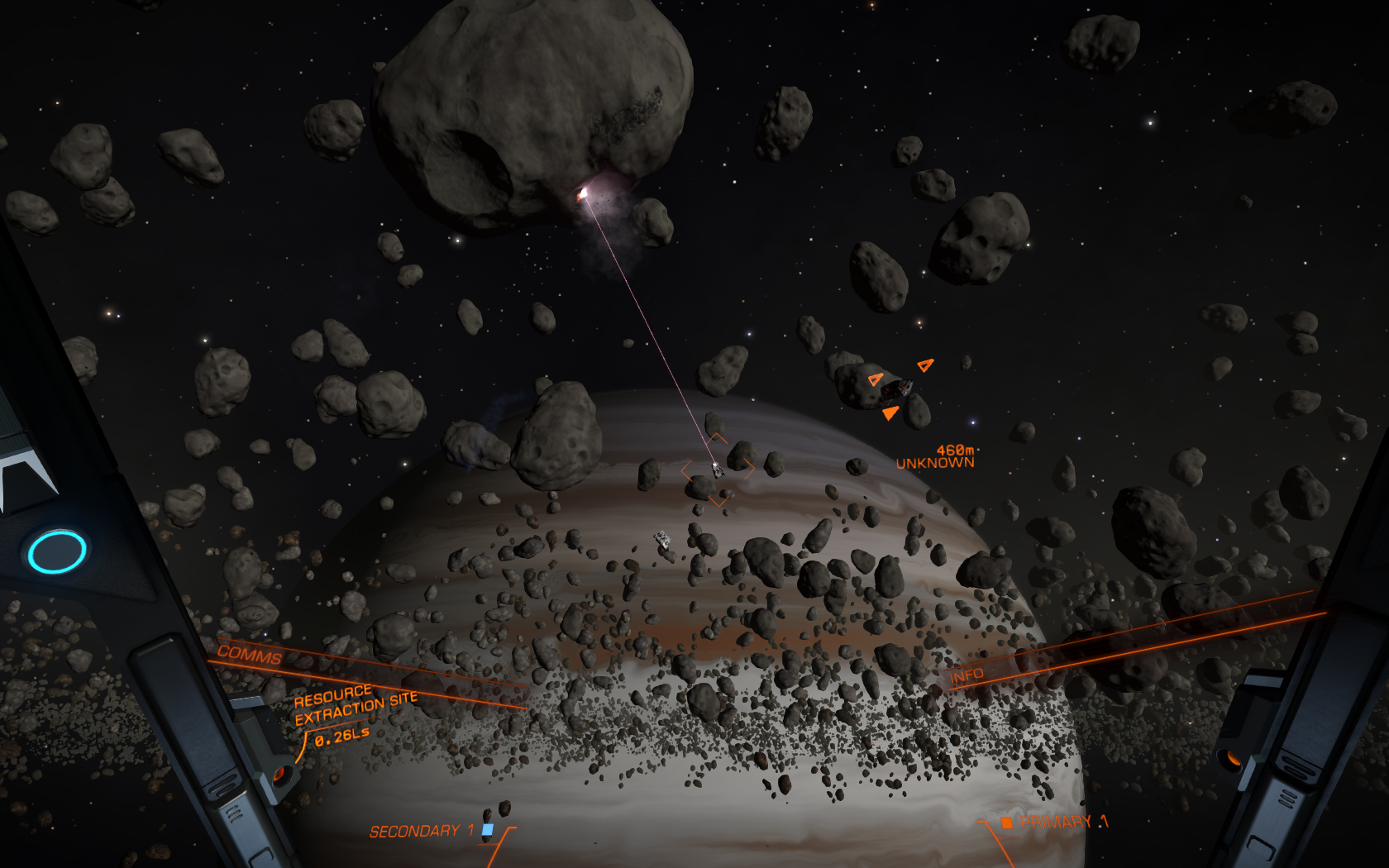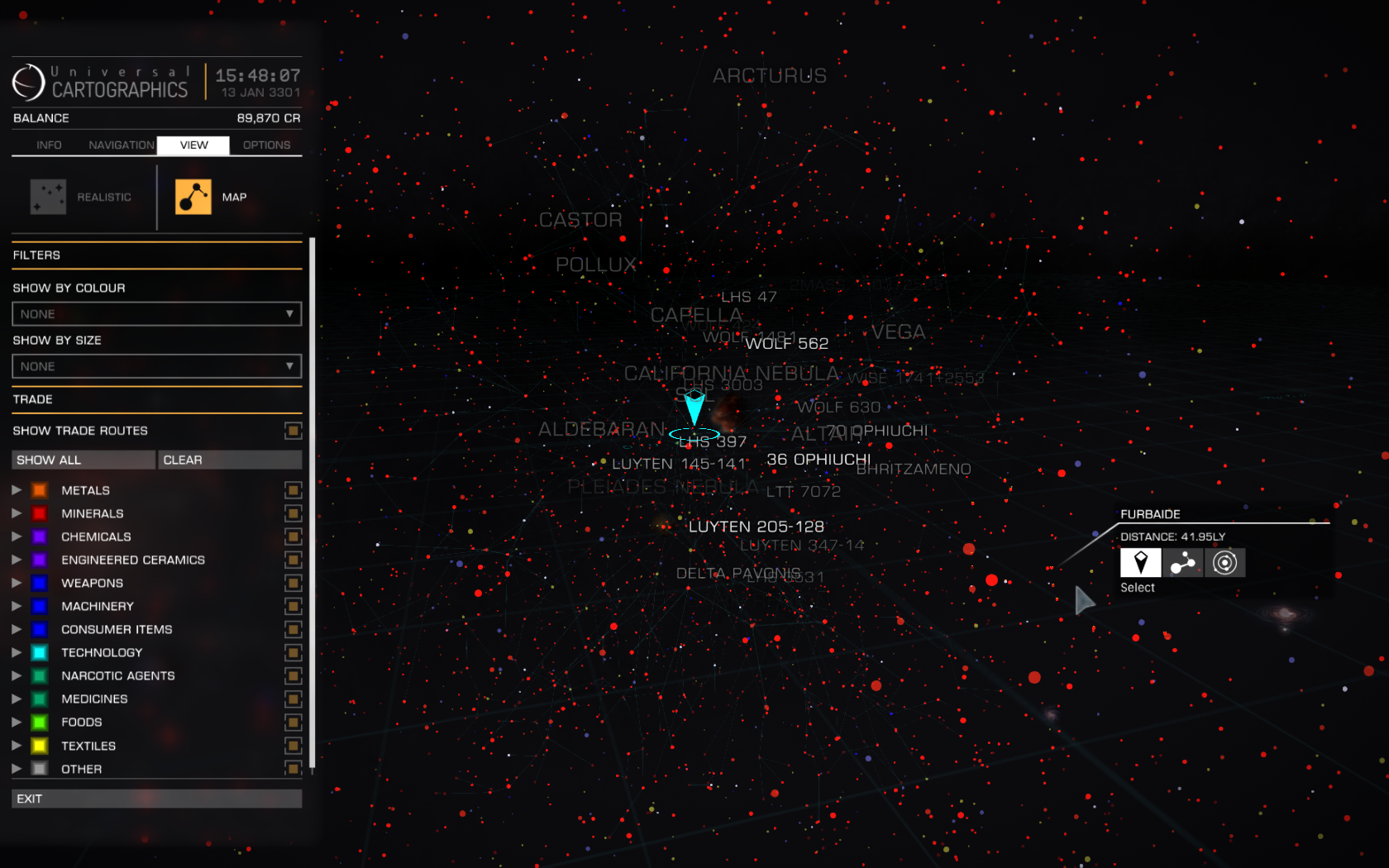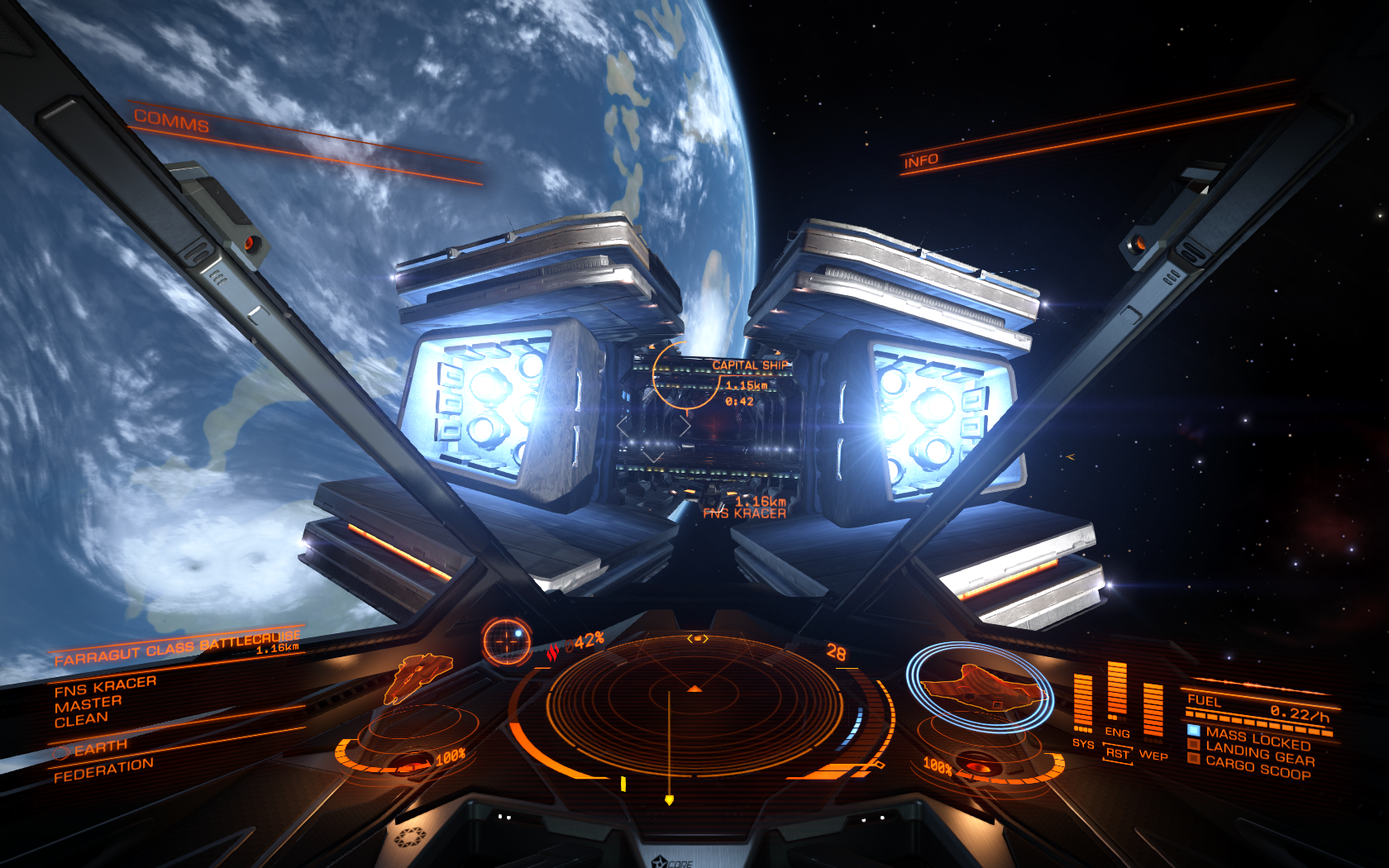Check out our Reviews Vault for past game reviews.
I’ve been dreaming of galaxy maps lately. Interplanetary routes spanning hundreds of light years have spread their way across my sleeping mind, with multicolored trading routes shooting off into infinity.
Elite: Dangerous is to blame. You see, it’s become something of an obsession. Sitting watching my daughter’s soccer training on a rainy Wednesday night, my mind drifted off to the bounties on offer in LTT 7448 and the best trade routes for gold and palladium near Sol. I just couldn’t shake the space sim from my head.
I left it running for nearly 7 days straight last week, dropping in to grab the throttle of my Eagle and run a mission, and then standing up again six hours later, wondering where the time went. At times, my sleeping mind struggled to separate the game from reality, and I’d wake in the night not knowing where I was.
It’s funny really, because life in Elite: Dangerous — released by Frontier Developments for PC on Dec. 16 — isn’t always that exciting. In fact, space travel can often be dull. But it’s the little moments of wonder, like stumbling on a funeral procession in deep space or dropping out of supercruise to find a small crew of Sidewinders quietly mining the asteroid belts around Jupiter, that make it such an engaging, immersive, and addictive experience.
What You’ll like
A vast galaxy to explore
Thirty years ago, the first Elite offered a 2,048-planet universe that let you play how you want. This new version takes the concept to its logical conclusion, giving you the chance to visit every star you can see in the night sky.
With 400 billion star systems to explore in a full-scale re-creation of our own Milky Way — part mapped and part procedurally generated — it has almost no end to the distance you can travel. And the open-ended nature of Elite: Dangerous means that embarking on a career in space piracy is as viable as setting up a trading company, becoming a bounty hunter, or simply heading out into the darkness and exploring uncharted stars.
Examining Elite: Dangerous’ galaxy map is initially daunting, especially when you realize it stretches out in all directions, but you can’t deny the scope for exploration and adventure this massive open-world offers. Concentrating on a smaller area of play for your first dozen hours helps control the mild panic you may experience when you pan around the full galaxy map, taking in the size of it all.
While not all the systems you visit are spectacularly exciting — some are simply a sun surrounded by deep space — you always have a chance of spotting the glimmering surface of a deep blue water-world, or discovering a forbidding far-off space station playing host to pirates.
You really can play how you want
Elite: Dangerous isn’t a predefined experience. If you’re looking for a 20 hour story that’ll funnel you to a neat ending, you’re in the wrong place.
Instead, it sets up a galaxy-sized playground to use how you want. So far, I’ve spent time hunting bounties, invested in a Hauler and trucked tea and valuable metals between star systems, and even turned my hand to mining asteroids, meticulously refining the raw materials they release for profit.
However you choose to play, you’ll want to earn credits to beef up your existing ship or expand your shipyard. With a variety of craft to buy with in-game currency and the freedom to customize them with a huge range of weapons and gadgets, Elite: Dangerous encourages experimentation, especially with the lack of hand-holding it provides.
It also has missions that you can carry out, and though they reward you with credits and respect, these are by no means obligatory. Taking them on can prove profitable, though, particularly early on.
Its universe also has an overarching power battle between three major factions — the Empire, the Federation, and the Alliance — that’s told through events, missions, and news feeds both as you play and via the Galnet website. Elite: Dangerous promises that you can influence these power battles in what is a persistent universe, but it’s too early in its life to see how this will really play out.




